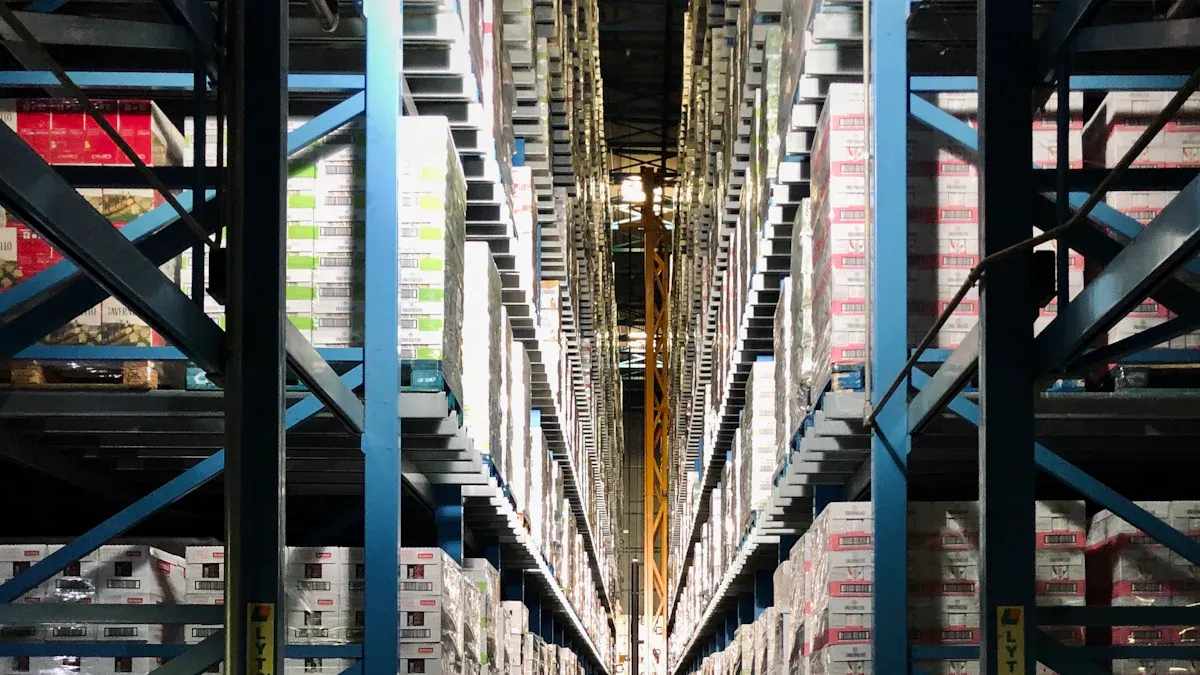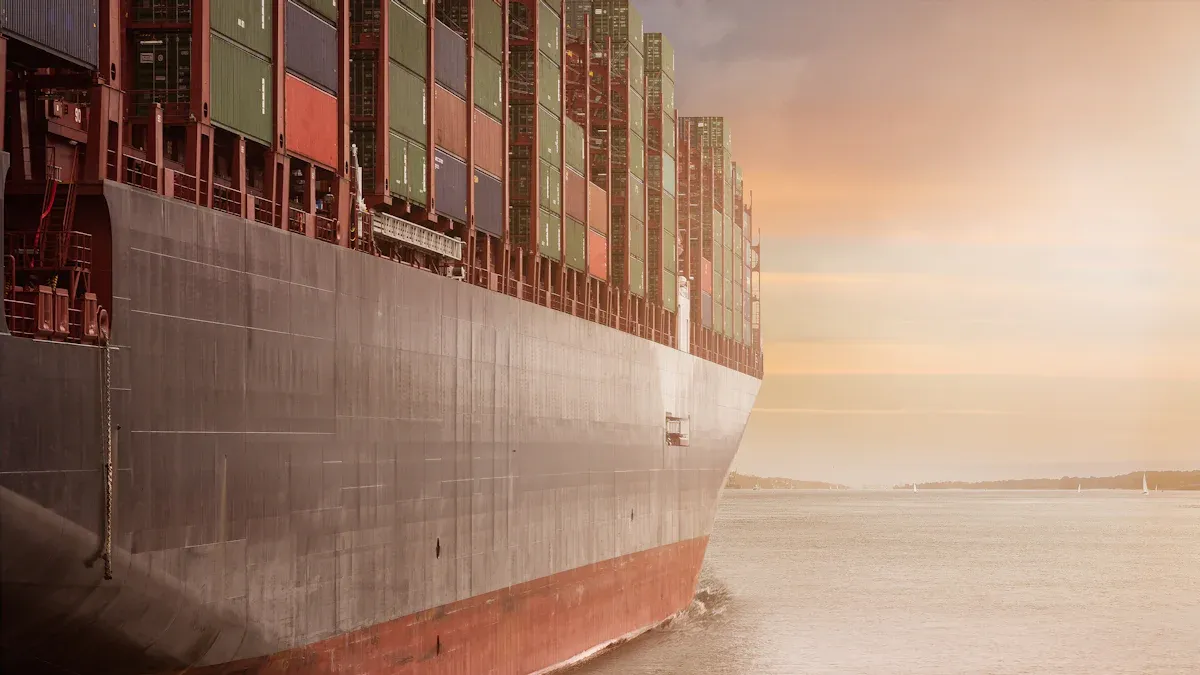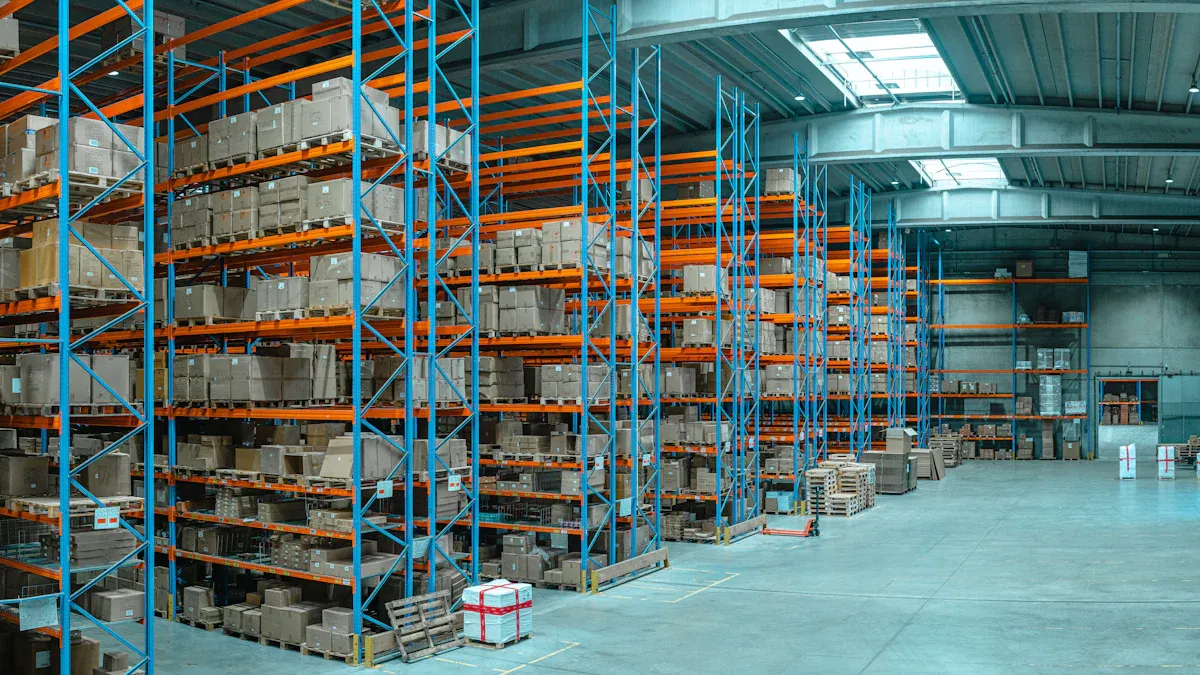Key Approaches to Supply Chain Optimization via Logistics Distribution

Logistics distribution helps make the supply chain better by making things faster, saving money, and keeping customers happy.
In 2024, U.S. logistics costs were $2.3 trillion. These costs were between 5% and 35% of what companies earned.
Good plans like AI, automation, and advanced analytics make supply chain management stronger. They also help with sustainability and make the supply chain tougher.
Key Takeaways
Use AI, automation, and data analytics to help supply chains work better. These tools make things move faster, cost less, and work more often without problems.
Make routes better and put shipments together to save money. This also helps things get delivered faster.
Use green logistics and watch things in real time. This helps build a strong supply chain that is good for the planet and cares about customers.
Advanced Logistics Strategies
AI and Automation
Companies use AI and automation to make the supply chain better. JUSDA’s JusLink AI helps guess what customers will want. It also helps control risks and gives real-time updates. These tools help companies manage logistics distribution better. They also make work easier and faster. JusLink’s AI can plan routes, send shipment updates, and handle documents. It can also set up warehouses and refill stock automatically. These ideas help save money and make work more efficient.
AI systems use real-time data to change delivery routes.
Chatbots tell customers about shipments and delivery times.
Automated systems make and check logistics documents.
Smart warehouses use robots to pick and pack orders.
Automated stock refilling stops items from running out.
Dynamic route planning uses GPS and traffic to make deliveries faster. Freight cost prediction tools help companies plan their budgets. Carrier monitoring checks if partners are reliable. Exception management finds shipment problems and gives solutions. These AI features help make the supply chain better and more efficient.
Data Analytics
Data analytics is important in supply chain management. Companies use analytics to make data better and help with decisions. JUSDA’s JusLink platform uses real-time data for demand forecasting and logistics optimization. Predictive analytics help companies get ready for risks like disasters or market changes. Machine learning and neural networks help guess what customers will want.
Analytics tools watch global events and weather to predict problems. Companies use this to change shipment routes or store extra inventory. Data analytics also helps track carbon emissions and waste. These facts help companies work better and make the supply chain stronger. Digital transformation and analytics help companies stay ahead and keep customers happy.
Route and Freight Optimization

Dynamic Routing
Dynamic routing is very important for making logistics networks better. Companies use digital tools to look at real-time data like traffic and weather. They also check for order changes. This helps them pick the best delivery routes. It also helps save money in the supply chain. JUSDA uses its global network and JusLink platform to change routes right away. This makes deliveries faster and costs less. When dynamic routing software works with load planning, it cuts handling costs. It also helps deliveries be more accurate.
Dynamic routing lets companies add or remove stops fast. This keeps routes working well and helps logistics optimization.
The table below shows how top companies use dynamic routing:
Company | Implementation Detail | Outcome / Benefit |
|---|---|---|
FedEx | Route optimization using real-time data | 10% less fuel cost, faster deliveries |
UPS | ORION system for logistics optimization | Saved $400 million, less pollution |
Addison Lee | Real-time traffic and demand forecasting | 20% quicker delivery, happier customers |
Freight Consolidation
Freight consolidation is a main way to save money in logistics. Companies put small shipments together into full truckloads. This helps make the logistics network better and lowers costs. It also makes trips faster and shipping cheaper for each item. There are fewer risks when handling goods. JUSDA uses technology to plan direct routes and watch shipments. This helps cut costs and work better.
Putting shipments together saves money and helps cost optimization.
Direct routes and fewer stops mean lower costs and faster trips.
Better tracking and less handling make the supply chain more reliable.
Real-time tracking and predictive analytics help logistics optimization. They cut down on delays and make deliveries more accurate. These ideas help companies save money and make the supply chain stronger.
Inventory and Warehouse Management

Warehouse Solutions
Modern warehouse solutions are important for supply chain success. JUSDA uses advanced systems like eVMI and JusLink. These systems give real-time inventory management and control. Companies can track stock and plan orders with these tools. They also help manage goods in many places. Some key features are:
Automated storage and retrieval systems help pick items faster and use less labor.
Warehouse management systems let companies track goods in real time and use data analytics.
RFID technology helps count stock correctly and keeps it safe.
Automated guided vehicles move goods quickly and safely.
Voice-directed picking systems help workers pick items more accurately and efficiently.
JUSDA also gives extra services like packing, labeling, and kitting. These services help companies save money and work better. Real-time inventory visibility helps companies fill orders faster and more reliably. Optimized picking routes make the process smoother. Companies can grow their operations and change workflows to fit their needs.
Note: Advanced warehouse solutions help save money by reducing mistakes, making work faster, and lowering storage costs.
Inventory Control
Good inventory management is very important for supply chain optimization. JUSDA’s systems use analytics and AI to guess what customers will want. They also help manage stock levels. This helps companies avoid running out of stock or having too much. It leads to better cost optimization. Inventory control systems help the supply chain by lowering holding costs. They also improve service and make work more efficient.
Sharp’s story shows how these solutions help. After improving its inventory management and warehouse layout, Sharp doubled how many orders it could send out. Storage space went up by 20%. The company needed half as many workers. Picking items became 50% faster. Buffer stock moved closer to where workers pick items. This made restocking quicker. These changes helped control costs and made customers happier.
Continuous replenishment and real-time data sharing help companies react fast to market changes. Connecting with other supply chain modules keeps data moving smoothly. It also helps companies make better decisions. Companies that use these cost optimization strategies work better and spend less across the supply chain.
Sustainable Supply Chain
Green Logistics
JUSDA works hard to use green logistics in many places. Companies want to use eco-friendly transportation and sustainable warehousing. This helps make the supply chain better. Many top companies use electric vehicles and new trucks. They also plan routes to use less fuel and make less pollution. Companies spend money on reverse logistics to get products back and cut waste. They check the environment often and work with green suppliers. This helps them follow rules and look good to customers.
Eco-friendly transportation: electric vehicles, route planning, and new trucks
Sustainable warehousing: energy-saving tools and clean energy
Reverse logistics: getting products back and cutting waste
Carbon offset projects: balancing greenhouse gas emissions
Environmental audits: checking rules and finding ways to do better
These actions help companies make less pollution and save money. They also make the supply chain stronger. Customers who care about the earth like these companies more.
Energy Efficiency
Energy efficiency is important for saving money in the supply chain. Warehouses make about 11% of the world’s CO₂ emissions. Companies use LED lights, smart air systems, and solar panels to use less energy. Automation, like AI storage and retrieval, cuts waste and saves money. One big center used energy tracking and saved 20% on power bills. They also worked better.
Description | |
|---|---|
Carbon Emissions Reduction | Less greenhouse gas from operations |
Cost Savings | Lower energy and operational cost |
Operational Efficiency Gains | Time and resource savings |
These steps help companies spend less and work better. They also make the supply chain stronger. Companies that use energy efficiency and green logistics save more money over time.
Risk Management in Logistics Distribution
Resilience Planning
Resilience planning helps companies get ready for surprises. JUSDA’s JusLink platform uses an AI risk control tower. This tool gives updates and alerts right away. It helps companies spot risks early and act fast. Companies use different ways to build resilience:
Use more than one supplier for key parts.
Train teams with crisis drills and practice plans.
Make flexible deals with suppliers.
Do regular risk checks and reviews.
Resilient supply chains can change fast and keep working during problems. Good leaders and teamwork help these plans succeed. When companies spend on resilience, they lower risks and get ahead of others.
Real-Time Monitoring
Real-time monitoring lets companies see their supply chain at each step. AI control towers, like in JusLink, watch shipments and inventory. They also check how suppliers are doing. These systems send alerts right away if there are delays or issues. Companies can fix problems quickly. Predictive analytics help find risks before they get worse. RFID and IoT technology update inventory levels right away. This helps stop stockouts.
Big companies like Walmart and Amazon use AI to study sales and demand data. This helps them avoid running out of products and keeps customers happy. Real-time data can make lead times shorter by up to 20%. During tough times, control towers help share goods fairly and keep the supply chain strong. These tools make logistics distribution work better and more reliably.
Customer-Centric Optimization
Flexible Delivery
JUSDA always thinks about what customers want first. The company gives many delivery choices to fit different needs. Customers can pick same-day, next-day, or set a delivery time. JUSDA uses automation and predictive analytics to plan routes. These tools also help manage inventory. These strategies help companies react fast when demand changes.
Key parts of a customer-focused delivery plan are:
Real-time shipment tracking gives accurate updates.
Data-driven planning helps guess what customers need.
Many delivery options match what customers like.
Problems get solved before they reach the customer.
Orders are filled quickly and reliably.
Sharp worked with JUSDA and saw big changes. After using special solutions, Sharp made deliveries 30% faster. They could send out twice as many orders. Mistakes went down, so deliveries were more exact. Customers were happier too.
Transparency
Transparency means being open and honest in the supply chain. JUSDA lets customers see shipments and inventory in real time. Customers get updates and alerts about their orders often. This open talk helps customers feel safe and know what is happening.
Important ways to be transparent are:
Automated updates tell customers about their orders.
Clear ways to talk to support teams.
Real-time data is shared between departments.
Customer feedback is collected and used to improve.
These steps help companies meet what customers expect. They also keep delivery accuracy high. By being open and meeting customer needs, JUSDA helps clients get better deliveries and loyal customers.
Performance Measurement
KPIs in Supply Chain
Tracking key performance indicators helps companies see how logistics distribution works. KPIs show what is going well and what needs to get better. Companies use these numbers to help save money and make smart choices. JUSDA checks its results against top companies. This helps find ways to give better service and lower costs.
The table below shows important KPIs for logistics distribution:
KPI Name | Description | Importance in Logistics Distribution |
|---|---|---|
Order Accuracy | Tracks errors from order to delivery | Ensures safe and correct shipments |
On Time in Full (OTIF) | Measures if orders arrive on time and complete | Supports punctual and reliable deliveries |
Lead Time | Shows how long each step takes | Helps optimize operations and reduce delays |
Stock Rotation | Compares stock movement to inventory balance | Keeps inventory fresh and efficient |
Monitors warehouse expenses | Controls cost in storage and handling | |
Truck Turning | Measures time trucks spend at the dock | Improves shipping speed and carrier profits |
Capacity Utilization | Checks how full trucks or containers are | Boosts transport efficiency and resource use |
Looks at employee output | Increases workforce efficiency | |
Transportation Costs | Adds up all shipping expenses | Helps manage and reduce shipment cost |
Number of Shipments | Counts shipments over time | Aids in financial planning and profit analysis |
Companies also watch on-time delivery, cost per shipment, and green KPIs like fuel use and CO2 emissions. These numbers help save money and support better inventory management.
Continuous Improvement
Continuous improvement means making small changes to get better over time. This helps lower risk and save money without big problems. JUSDA uses checks and comparisons to keep making logistics distribution better. Teams look at how suppliers do, how the environment is affected, and if customs rules are followed. They also check spending on transport and how warehouses are used.
Companies use tools like process maps, control charts, and Kanban boards to find problems.
Lean, Six Sigma, and Kaizen help teams cut waste and improve quality.
Regular checks look for ways to save money and manage inventory better.
Continuous improvement builds a culture where everyone tries to work smarter. It helps with better planning, stronger supplier teamwork, and happier customers. By using data and technology, companies keep their supply chain strong and ready for change.

JUSDA Solutions
To provide you with professional solutions and quotations.
Companies can make their supply chain work better by using smart strategies. These include using new technology, managing warehouses well, caring about the environment, and thinking about customers. JUSDA is a leader with new ideas. Companies should look at what they do now. They should try new ways and use digital tools or better warehouses. This helps them deliver faster and get better results.
See Also
Understanding The Financial Benefits Of Supply Chain Efficiency
Discover Five Cutting-Edge Methods To Enhance Supply Chains
Best Strategies To Ensure Success In Supply Chain Management
How Supply Chain Innovations Are Transforming Modern Logistics
Effective Approaches To Solve Supply Chain Challenges In Tech
